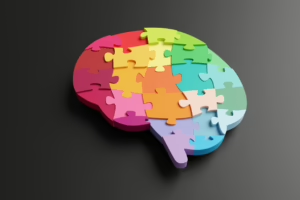Artificial intelligence (AI) is driving a major transformation in the restaurant industry. AI has a profound impact on the way restaurants operate. From automating repetitive work to optimizing worker efficiency, AI transforms how they run. Many fear that AI is going to replace jobs. However, it’s true purpose is to improve operations, make better decisions, and provide a seamless experience for the customer.
Restaurant managers can improve employee and customer satisfaction by integrating AI-powered automated workflows. These technological advances are redefining efficiency, whether it’s through AI-driven engagement with customers, predictive analytics or robotic kitchen assistants. This article examines how AI has revolutionized restaurant workflows and employee management, leading to a more intelligent and responsive industry.
AI-Powered automation: Transforming restaurant operations
AI-driven automation revolutionizes restaurant workflows, streamlining everything from food preparation to stock management. Robotic chefs and automated cooking station help to maintain consistency in fast-paced kitchens. They also reduce human errors and speed up service. AI-powered order systems and self-ordering kiosks are improving customer convenience, reducing wait times and optimizing resources. Many businesses have already implemented AI-powered solutions for restaurants in order to increase operational efficiency and offer a seamless customer experience.
AI automation can be used to automate repetitive and laborious tasks. AI-powered robots that clean dishes, for instance, can significantly reduce cleaning time while maintaining high standards of hygiene. AI-driven drink dispensers can also automatically adjust drinks based on the preferences of customers, ensuring consistency and reducing waste.
AI is also a key component of backend operations. Smart inventory management systems monitor stock levels in real-time, reducing wastage and ensuring restaurants maintain optimal ingredients levels. Predictive analytics helps managers forecast demand and make data-driven purchases.
“AI does not replace human expertise in restaurants. It enhances it by removing repetitive tasks and allowing the staff to focus more on the customer experience.”
Optimising Workforce Management With AI
Restaurants face a number of challenges, including managing staff effectively. AI-powered tools for scheduling are revolutionizing workforce management. They predict customer traffic patterns, and optimize shift planning according to that. These tools use past data to predict peak hours and ensure that restaurants do not understaff or overstaff.
AI-powered platforms for scheduling take into account multiple factors, including employee availability, previous performance and fluctuations in demand. AI-driven workforce optimization allows restaurants to reduce labor costs and staff adequately during peak times.
The ability of AI to analyze employee performance is another major benefit. AI-driven tools track productivity, customer feedback and order fulfillment. Managers can identify top performers, provide targeted training and correct inefficiencies before the situation escalates. AI can assist with onboarding and training through interactive virtual assistants who guide new employees through company policies and procedures.
Enhancing Customer Service Through AI Solutions
AI makes it easier than ever to provide personalized service, which is key for customer retention. AI-driven chatbots can handle reservations, provide answers to common questions, and offer menu suggestions based on past orders and preferences.
AI-powered engines that provide personalized suggestions analyze data from customers to increase upselling opportunities. If a customer orders vegan food frequently, the AI system may highlight new menu items that are plant-based or suggest complementary drinks. This level of customization not only improves the customer experience, but also increases revenue.
To gauge customer satisfaction, AI-powered sentiment analysis and voice recognition are also being used. Restaurants can use online reviews and social media interaction to identify improvement areas, addressing customers’ concerns before they become larger problems. AI-driven tools that track customer sentiments in real time allow managers to adjust service quality instantly.
The Future of Smart Dining With AI
AI-driven platforms for restaurant management streamline multiple aspects of the restaurant operation. These solutions combine reservation systems, table management and predictive analytics in order to optimize workflows. AI platforms can help restaurants maximize efficiency by analyzing restaurant traffic and customer behavior.
AI-driven solutions are becoming increasingly popular.
- Dynamic Pricing Algorithms: Adjusting Menu Prices based on Demand and Inventory Levels.
- Automated Food Safety Monitoring: AI powered sensors track temperature and hygiene conditions.
- Voice-activated order systems: Reducing errors and speeding up the ordering process.
- AI driven energy management: Monitoring the energy consumption of kitchens in order to maximize efficiency and reduce costs.
AI can help restaurants remain competitive, increase profitability and offer seamless experiences to both employees and customers. AI can also improve supply chain efficiency, by automatically adjusting orders and predicting shortages of ingredients.
Data-driven decision-making and AI in restaurants
AI’s power goes beyond automating and optimizing workforces. It also allows for data-driven decisions. AI algorithms examine vast amounts of data in order to discover trends, optimize menus and refine marketing strategy. AI can help restaurants track seasonal trends and customer preferences to ensure they are offering the right dishes when the time is right.
AI predictive analytics helps restaurants to anticipate disruptions in the supply chain, which allows them to be proactive with their sourcing and inventory control. Data can be used to increase restaurant profitability and reduce waste.
AI-driven tools for business intelligence also provide restaurant owners with a comprehensive view of their financial performance, customers’ behavior and operational efficiency. These insights allow restaurant managers to make better decisions, which improve service quality and profitability.
AI’s growing role in the restaurant industry
AI integration in restaurants is in its infancy, but it has enormous potential. Voice-activated orders, AI-driven robot servers, and fully-autonomous kitchens are all possible future advancements. AI will be a key tool for enhancing efficiency and improving customer experience as technology advances.
AI is being tested already in restaurant concepts that allow customers to place orders using facial recognition and robotic servers deliver food directly to the table. Some restaurants are exploring AI-powered drones that can deliver food more quickly than traditional methods.
AI may be viewed as disruptive by some, but its role is to support the restaurant industry rather than replace it. AI automates repetitive tasks so that restaurant staff can focus on what really matters – delivering outstanding service and creating unforgettable dining experiences.



